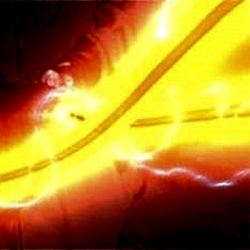Editor’s note: This one obviously goes back a few years, but the information is worthy of repeating.
One of my favorite scenes in Ghostbusters is when Egon gives the guys a warning about crossing the streams. As we know, it’s not good. Not good at all.
Dr. Egon Spengler: There’s something very important I forgot to tell you.
Dr. Peter Venkman: What?
Dr. Egon Spengler: Don’t cross the streams.
Dr. Peter Venkman: Why?
Dr. Egon Spengler: It would be bad.
Dr. Peter Venkman: I’m fuzzy on the whole good/bad thing. What do you mean, “bad”?
Dr. Egon Spengler: Try to imagine all life as you know it stopping instantaneously and every molecule in your body exploding at the speed of light.
Dr Ray Stantz: Total protonic reversal.
Dr. Peter Venkman: Right. That’s bad. Okay. All right. Important safety tip. Thanks, Egon.
That scene played out in real life for me a few weeks back. Well, sort of. I didn’t exactly experience total protonic reversal, but I did discover that it’s a bad, bad thing to cross the streams in a redundant (Audinate) Dante network. But let’s back up a step.
Two Types Of Dante Networks
There are a few different ways to lay out a Dante network. Ignoring topologies for a moment, you can either set up a redundant network or a switched network.
All Dante devices have two Dante network ports on them, and they are labeled Primary and Secondary. By default, most devices have those two ports connected together in switched mode. That means you can plug one device into the primary and another device into the secondary and data will flow freely between all three devices.
The benefit of this method is that you don’t need any switches. Just keep daisy chaining all the devices together and the network works quite well.
The downside is that if any link in the chain breaks, audio stops flowing. If you had a console and computer at front of house, two stage racks, a processor and a few amps on stage, and someone breaks the cable between the two stage racks, you will lose audio in the house as the data is no longer flowing from the console all the way through to the system processor and amps.
Now, you could just take all the primary ports and connect them to an external switch. That way, if you lose one link, only that device is affected; the rest of the system still functions. This is clearly a step up in reliability from the daisy chain, but you can still lose a device if a cable fails.
That’s why the better option is a redundant network. In a redundant network, you connect all the primary ports to a switch (or series of switches, depending on the layout) and all the secondary ports to another switch or set of switches. I highlight “another” because it’s very important that the networks remain separate.





















